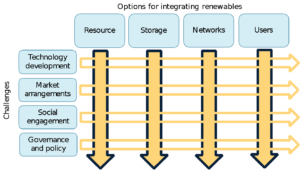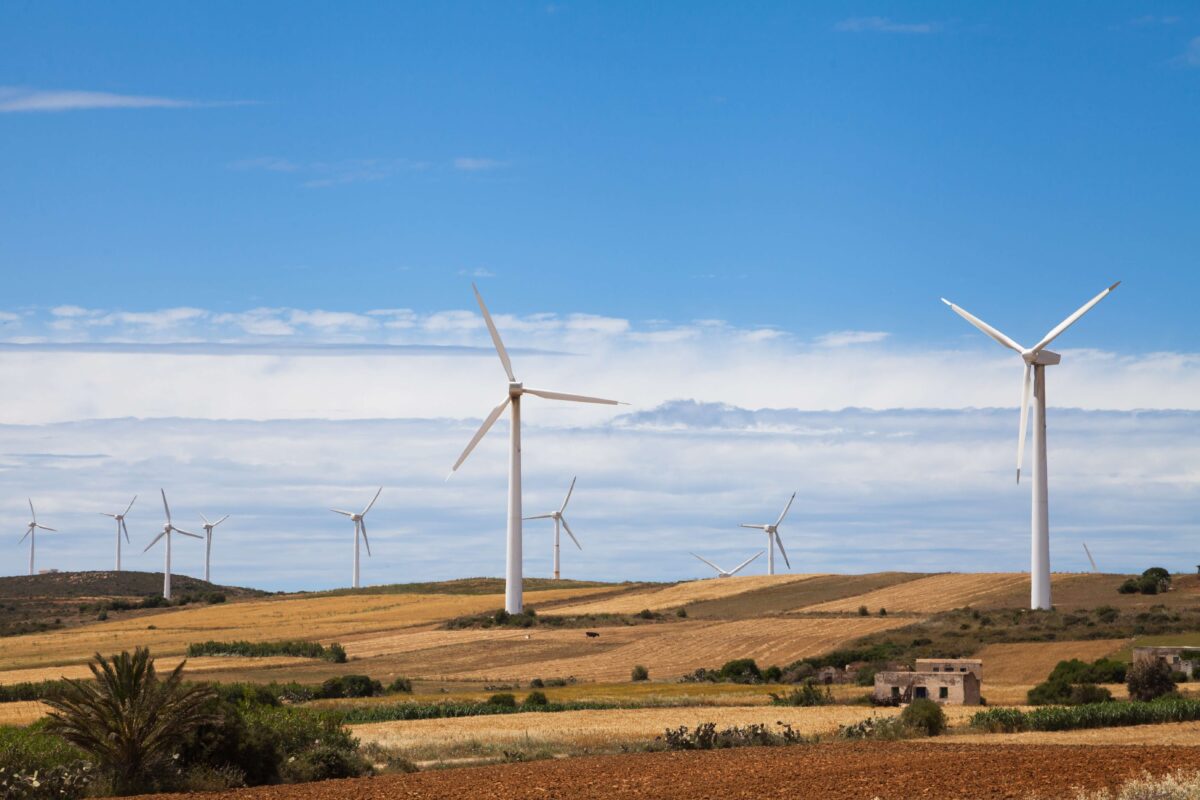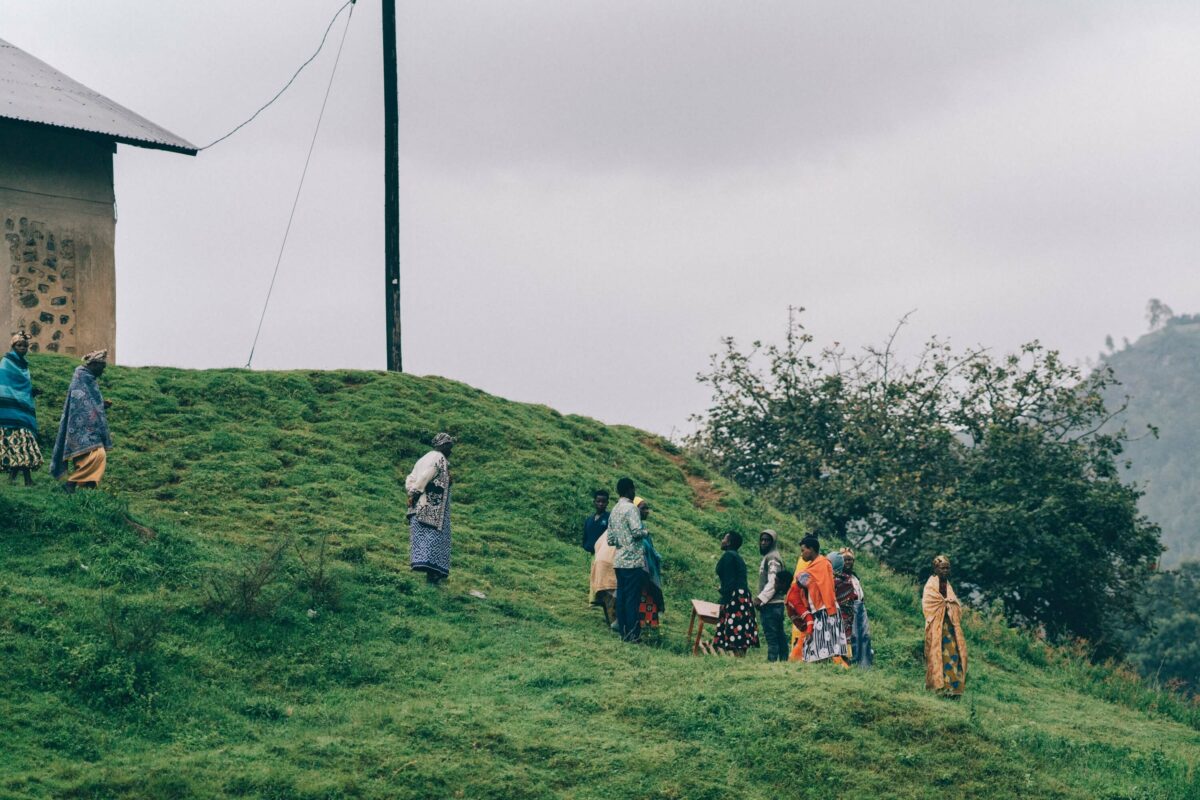What did we learn on the Journey?
Many years ago I put together a conference paper under the title ‘Why, what, when, how, where and who?’. If nothing else, it helped gather my thoughts on a fairly complicated set of issues, and those six general questions have provided a handy checklist in many situations since. Here is my personal take on the INTEGRATE experience.
Why?
In 2015, when the INTEGRATE bid to the Oxford Martin School, was drawn up, the costs of renewable energy (especially solar and wind-generated electricity) were plummeting at a rate that would have made even seasoned optimists blink hard only 10 years previously. So were the costs of battery storage. Now, economists and grid operators were starting to take renewable supply seriously. The climate case for it was unanswerable. And with massive demand for electricity in parts of the world many miles from any reliable network, it was time to take a hard look at operationalising renewables-based systems. These had the potential to replace traditional hub-and-spoke, centralised systems with something far more environmentally and socially benign. But it wouldn’t simply be a matter of swapping out coal- or gas-fired power plants with solar farms. The new sources of supply are to be found everywhere and are tapped using technologies with millions of owners and operators; they rely on sun, wind and water, each with its own rhythms and variability; and they have to be matched in real-time with changing patterns of demand. Making renewables-based systems into everyday reality would be a major integrative challenge with technical, economic, social and governance dimensions. It would also be well-suited to the Oxford Martin School, with its focus on interdisciplinary research for a sustainable and inclusive future.
What?
Enter the INTEGRATE Portcullis, offering a rationale for what would be studied in the four ‘challenge’ dimensions. Each crossroads offers an opportunity: what sorts of governance are available and needed for networks? What are the emerging market arrangements for solar resources? How do users interact with this or that new control technology?

INTEGRATE also recognised the need to make sure that demand took its place as the raison d’être for, and mirror-image of, supply. Case studies at different scales helped our understanding of the portcullis. One thing that stood out to me from this journey was the significance of the ‘middle actors’ in systems, the people and organisations who are so often responsible for making things happen. Examples are the land-use planners who influence where demand and new forms of supply will come from, in what quantity; the engineers who recommend, install and maintain our heating systems; the demand aggregators who are bringing together small-scale providers of flexible demand and making it into a viable source of demand response.
Overall, we learned that yes, renewable-based systems can be viable: the social, technical and economic pieces in the jigsaw can be imagined, modelled and then put into practice. Our case studies showed that first attempts take a lot of effort (in energy as elsewhere). But they offer workable models for the future.
When?
The INTEGRATE workplans were clearly not going to be completed in a few months, or even years, so the longevity of the project has been more than welcome. The bid was submitted in March 2015 and the first Research Fellows started work in the spring of 2016. Over time, some moved on and were replaced, while the topics evolved and broadened out. The pace slowed towards the end but the work of INTEGRATE is still very much happening, in various forms. Most obviously via the fledgling Zero-carbon Energy Research Oxford Institute but also in Local Energy Oxfordshire (the most absorbing demonstration project I’ve ever worked on) and in the International Community for Local Smart Grids.
How?
The first axiom of INTEGRATE: there is no such thing as a dumb question. Our fortnightly seminars were above all exercises in trying to understand the vocabularies, principles and approaches of colleagues from different backgrounds. This served us extremely well. It was how we built towards that near-mythical state of being, interdisciplinarity. At the same time, we were achieving a fair degree of multidisciplinarity (a more accessible condition), especially among the Research Fellows, who met together often to work on joint papers. We had guidance from an immensely experienced Advisory Board; we had serendipitous random encounters with colleagues within and beyond the University.
A glance at the long list of publications gives a flavour of the written outcomes. Those of us who were there during their gestation can hear echoes of conversations that went on between physicists, engineers, economists, social scientists, materials scientists, regulators and industry practitioners. These happened because the programme was structured to encourage these conversations.
Where?
INTEGRATE was concerned with developments in the UK more than anywhere else, the territory we knew best and where the possibilities for dialogue were strongest. But our Fellows and other collaborators came from a much wider catchment and this was reflected in the seminars and some of the case studies. Eastern and southern Africa were probably best represented.
Who?
Answering this question is hazardous: there have been so many contributors. First, of course, James Martin, whose vision and endowment made the Martin School possible. The staff of the Martin School, who have helped us at every turn. The originators of the INTEGRATE concept and co-directors throughout the project, Nick Eyre and Malcolm McCulloch, along with the original theme leaders and Phil Grünewald. The postdoctoral Fellows who generated ideas, seminars, papers, reports and networks that are still doing the work of the project in various situations around the world. The Visiting Fellows, especially Maxine Frerk and John Rhys, whose wisdom and insight helped to keep the project well-grounded. Our industrial partners, especially Scottish and Southern Energy, Ofgem, Siemens and National Grid. Our three Project Managers – Becky Ford, Helen Gavin and Eleanor Buckley – who kept the show on the road with verve and imagination. And the many, many people who attended our seminars, read and responded to our publications, or are now working with INTEGRATE partners on new research and practical initiatives.




